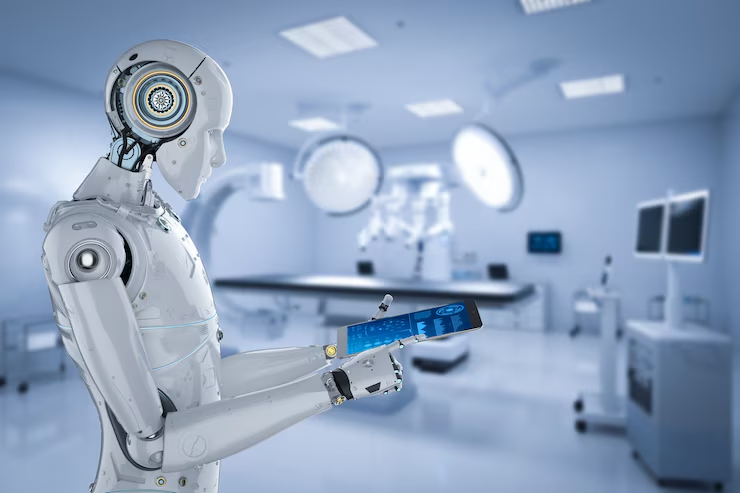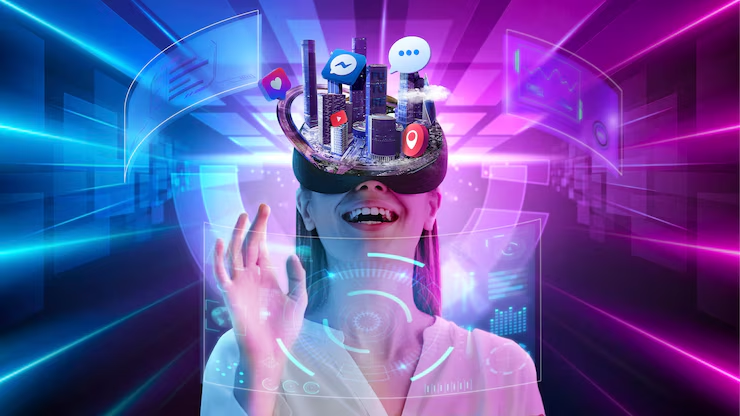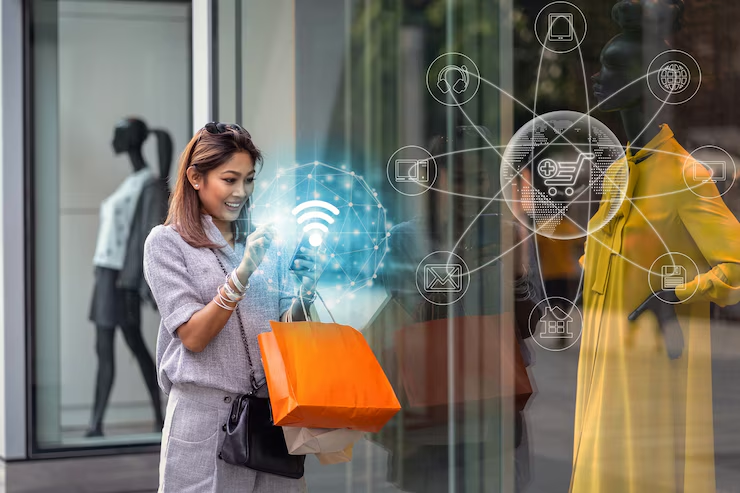Artificial Intelligence in Everyday Life: How AI is Transforming the Modern World
Introduction :
Artificial Intelligence (AI) is no longer just a futuristic concept confined to science fiction movies. It has become an integral part of our daily lives, revolutionizing industries, enhancing productivity, and reshaping how we live, work, and interact. From voice assistants like Siri and Alexa to advanced algorithms in healthcare, transportation, and finance, AI is influencing almost every aspect of the modern world. In this blog, we’ll explore how AI is transforming everyday life, its real-world applications, benefits, challenges, and what the future holds.
________________________________________
1. Understanding Artificial Intelligence
Artificial Intelligence refers to the simulation of human intelligence processes by machines, especially computer systems. These processes include learning (acquiring information), reasoning (applying rules to reach conclusions), and self-correction.
Types of AI:
• Narrow AI (Weak AI): Designed for specific tasks like facial recognition or web searches (e.g., Google Search, Netflix recommendations).
• General AI (Strong AI): Capable of performing any intellectual task a human can do. Still largely theoretical.
• Super AI: More intelligent than humans in every field. Exists only in theory and science fiction for now.
________________________________________
2. AI in Communication
One of the most visible examples of AI in daily life is in communication tools.
Examples:
• Email Filtering: Gmail’s spam filters use AI to categorize emails.
• Smart Replies: AI predicts and suggests responses.
• Voice Assistants: Siri, Alexa, and Google Assistant use Natural Language Processing (NLP) to understand and respond to user commands.
These tools enhance productivity and make communication faster and more efficient.
________________________________________
3. AI in Healthcare
AI has made significant contributions to healthcare, enabling better diagnostics, patient care, and research.
Applications:
• Medical Imaging: AI algorithms detect tumors, fractures, and abnormalities in X-rays and MRIs.
• Predictive Analysis: AI can predict disease outbreaks and assist in early diagnosis.
• Robotic Surgery: Precision robots assist doctors in complex surgeries, reducing recovery times.
• Virtual Nursing Assistants: AI-powered apps like Ada and Babylon provide medical advice and track health metrics.
AI improves accuracy, saves time, and enhances the overall patient experience.
________________________________________
4. AI in Transportation
The transportation industry has been transformed by AI innovations.
Examples:
• Self-Driving Cars: Companies like Tesla and Waymo are pioneering autonomous vehicles.
• Traffic Management: AI systems analyze real-time data to optimize traffic flow and reduce congestion.
• Navigation Apps: Google Maps and Waze use AI to suggest the fastest routes and detect traffic jams.
These systems improve safety, reduce travel time, and enhance mobility.
________________________________________
5. AI in Home and Daily Life
Smart homes are becoming common thanks to AI integration.
Features:
• Smart Thermostats: Learn user behavior and adjust temperature for comfort and energy saving.
• Security Systems: AI-powered cameras detect unusual activity and send alerts.
• Smart Appliances: Refrigerators that suggest recipes, washing machines that detect load size, and voice-controlled lights and TVs.
AI adds convenience and energy efficiency to our homes.
________________________________________
6. AI in Entertainment and Media
AI has revolutionized how content is created, consumed, and recommended.
Applications:
• Recommendation Engines: Netflix, YouTube, and Spotify suggest content based on viewing/listening habits.
• AI-Generated Content: Some news outlets use AI to draft articles.
• Gaming: AI opponents in games are smarter and more challenging, providing a better experience.
AI enhances personalization and engagement in media consumption.
________________________________________
7. AI in E-commerce and Retail
AI plays a crucial role in enhancing user experience in online and offline shopping.
Examples:
• Product Recommendations: Based on browsing history and preferences.
• Chatbots: Provide instant customer service on websites.
• Inventory Management: AI forecasts demand and optimizes supply chains.
These tools lead to increased sales and improved customer satisfaction.
________________________________________
8. AI in Education
AI is making education more personalized and accessible.
Use Cases:
• Adaptive Learning Platforms: Apps like Duolingo adjust lessons based on user progress.
• Automated Grading: Saves time for teachers and provides instant feedback.
• Virtual Tutors: Help students learn at their own pace.
AI breaks barriers and makes learning more effective.
________________________________________
9. AI in Banking and Finance
AI in finance has improved accuracy, efficiency, and security.
Features:
• Fraud Detection: Monitors transactions to detect unusual patterns.
• Algorithmic Trading: AI executes trades at high speeds for maximum profit.
• Personal Finance Management: Apps like Mint or Cleo help manage budgets.
AI minimizes risk and boosts financial literacy and access.
________________________________________
10. AI in Agriculture
AI is being used to improve crop yields, monitor soil health, and automate farming tasks.
Benefits:
• Drones with AI: Monitor crop health and apply pesticides/fertilizers precisely.
• Smart Sensors: Detect moisture and nutrient levels.
• Predictive Analytics: Help plan planting and harvesting cycles.
This leads to more efficient and sustainable farming practices.
________________________________________
11. Ethical Concerns and Challenges of AI
Despite its benefits, AI poses several ethical and practical challenges.
Key Issues:
• Job Displacement: Automation could replace human jobs.
• Privacy Concerns: AI systems collect and analyze large amounts of personal data.
• Bias in Algorithms: AI systems can inherit biases from their training data.
• Lack of Transparency: AI "black box" systems are difficult to interpret.
Addressing these challenges requires transparency, regulation, and responsible development.
________________________________________
12. Future of AI: What’s Next?
AI is evolving rapidly. The next decade could bring:
• General AI with human-like understanding.
• AI in creative fields: Writing novels, composing music, designing art.
• AI governance: More regulations for ethical AI use.
• AI and IoT: Seamless integration into homes, cities, and industries.
AI will likely become as fundamental as electricity in our daily lives.
________________________________________
13. AI in Cybersecurity
As cyber threats become more complex, AI is stepping in as a key defense mechanism.
Applications:
• Threat Detection: AI systems analyze behavior patterns to detect anomalies like phishing or ransomware attacks.
• Real-Time Response: AI enables automatic response to threats, minimizing damage and downtime.
• User Authentication: AI-based biometric systems (like facial recognition and fingerprint analysis) add an extra layer of security.
Impact: AI enhances digital safety, especially for banks, e-commerce, and cloud-based platforms, by identifying vulnerabilities before they are exploited.
________________________________________
14. AI and Big Data: A Powerful Combination
AI thrives on data — the more data it has, the smarter it gets.
Integration:
• Data Processing: AI can analyze vast datasets in seconds, revealing trends, insights, and patterns invisible to humans.
• Business Intelligence: Companies use AI to make data-driven decisions and predict market trends.
• Customer Insights: AI segments customers based on behavior, allowing hyper-personalized marketing.
Impact: Businesses can offer better products, services, and user experiences while optimizing operations.
________________________________________
15. AI in Climate Change and Environmental Protection
AI is now used to fight one of humanity’s biggest challenges — climate change.
Solutions:
• Climate Modeling: AI improves the accuracy of weather and climate forecasts.
• Carbon Tracking: AI tools track emissions in real-time, helping companies reduce their carbon footprint.
• Wildlife Protection: AI-powered drones monitor endangered species and poaching activity.
Impact: AI promotes sustainability and gives us tools to protect the environment more efficiently than ever before.
________________________________________
16. AI in Legal and Judicial Systems
Even the legal field is adopting AI to simplify processes and improve efficiency.
Tools:
• Document Review: AI scans legal contracts and highlights risks or errors.
• Predictive Judgments: Some systems can predict case outcomes based on historical data.
• Virtual Legal Assistants: Help clients with basic queries and legal advice.
Impact: AI reduces workloads in courts and law firms, improves accessibility to legal resources, and cuts costs.
________________________________________
17. AI and Human Creativity: A Surprising Partnership
Contrary to the belief that AI replaces creativity, it often enhances it.
Use Cases:
• Music Composition: Tools like Amper and AIVA compose original music using AI.
• Art Creation: AI-generated art has even been auctioned at major galleries.
• Writing and Storytelling: AI like ChatGPT assists authors, journalists, and marketers in content creation.
Impact: AI acts as a co-creator, enhancing human imagination rather than replacing it.
________________________________________
18. AI in Social Media and Online Behavior
Social platforms use AI to understand and influence human behavior at scale.
Features:
• Content Recommendations: Platforms like TikTok, Instagram, and YouTube rely heavily on AI to keep users engaged.
• Moderation: AI flags hate speech, fake news, and harmful content.
• Ad Targeting: AI delivers highly personalized ads based on behavior and preferences.
Impact: While this improves user experience and marketing effectiveness, it also raises concerns about privacy and mental health.
________________________________________
19. How Startups and Small Businesses Use AI
AI is no longer limited to tech giants — startups and small businesses are embracing it too.
Benefits:
• Chatbots: Provide customer support 24/7 without human staff.
• Sales Forecasting: Predict trends and plan inventory.
• Marketing Automation: Target the right audience with personalized emails and ads.
Impact: Even with limited resources, small businesses can compete with big players using AI.
________________________________________
20. Challenges in Implementing AI
While AI is powerful, it’s not without hurdles.
Major Challenges:
• Data Privacy: AI systems require massive data, raising ethical concerns.
• Lack of Talent: There’s a shortage of AI developers and researchers.
• High Costs: Implementing AI systems can be expensive.
• Algorithmic Bias: AI systems can unintentionally discriminate if trained on biased data.
Solution: Governments, institutions, and tech companies must promote transparent, inclusive, and ethical AI development.
________________________________________
21. Careers in Artificial Intelligence
AI has created a booming job market across industries.
High-Demand Roles:
• AI Engineer
• Data Scientist
• Machine Learning Specialist
• AI Researcher
• Robotics Engineer
• NLP Specialist
Required Skills:
• Python, R, and TensorFlow
• Data Analytics and Visualization
• Deep Learning and Neural Networks
• Cloud Platforms (AWS, Azure, Google Cloud)
Impact: Learning AI opens up lucrative career opportunities and is a future-proof skill.
________________________________________
22. AI for People with Disabilities
AI is empowering people with disabilities by improving accessibility.
Tools:
• Speech-to-Text and Text-to-Speech: Help people with hearing or speech impairments.
• Smart Wheelchairs: AI-assisted mobility for users with physical challenges.
• Visual Recognition: Apps like Seeing AI describe surroundings to visually impaired users.
Impact: AI bridges gaps and promotes inclusion in education, employment, and daily living.
________________________________________
Conclusion: Embracing the AI-Powered Future
Artificial Intelligence is not just a passing trend — it's a core part of the next industrial revolution. From personalized experiences to societal transformation, AI is enabling smarter decision-making, unlocking new efficiencies, and solving complex problems across every industry.
Yet, as we adopt AI more deeply, we must also stay vigilant. Responsible innovation, transparent algorithms, and ethical usage are crucial to ensure AI benefits all of humanity.
By embracing AI’s potential and preparing for its challenges, we are shaping a future that is not just technologically advanced, but also more connected, inclusive, and intelligent.
Artificial Intelligence is reshaping the modern world by transforming how we live, work, and interact. From healthcare and transportation to entertainment and education, AI is making life smarter, faster, and more efficient. However, with this power comes responsibility. Developers, governments, and users must work together to ensure that AI benefits all of humanity while minimizing risks and ethical concerns.
As AI continues to evolve, embracing its potential while remaining cautious and informed will be key to thriving in this technology-driven era.












